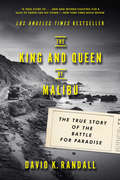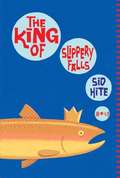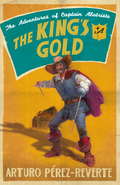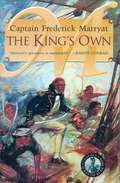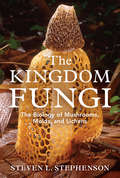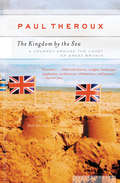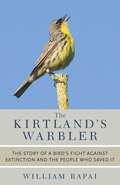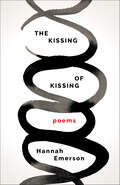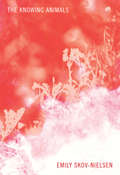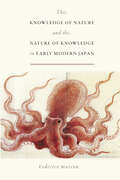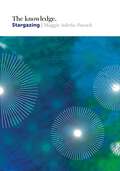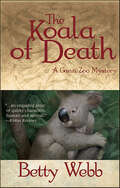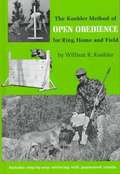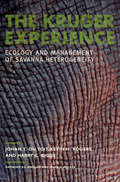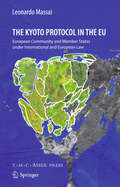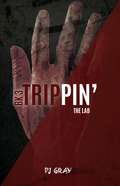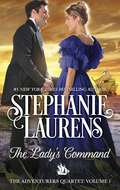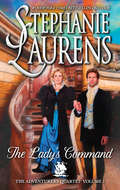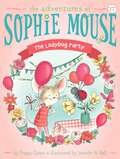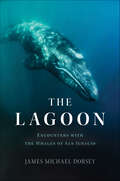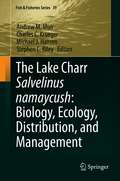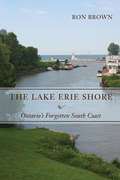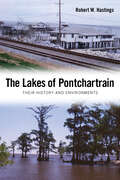- Table View
- List View
The King and Queen of Malibu: The True Story of the Battle for Paradise
by David K. RandallNew York Times best-selling author David K. Randall spins a remarkable tale of the American West and the desire of one couple to preserve paradise. Frederick and May Rindge, the unlikely couple whose love story propelled Malibu's transformation from an untamed ranch in the middle of nowhere to a paradise seeded with movie stars, are at the heart of this story of American grit and determinism. He was a Harvard-trained confidant of presidents; she was a poor Midwestern farmer's daughter raised to be suspicious of the seasons. Yet the bond between them would shape history. The newly married couple reached Los Angeles in 1887 when it was still a frontier, and within a few years Frederick, the only heir to an immense Boston fortune, became one of the wealthiest men in the state. After his sudden death in 1905, May spent the next thirty years fighting off some of the most powerful men in the country--as well as fissures within her own family--to preserve Malibu as her private kingdom. Her struggle, one of the longest over land in California history, would culminate in a landmark Supreme Court decision and lead to the creation of the Pacific Coast Highway. The King and Queen of Malibu traces the path of one family as the country around them swept off the last vestiges of the Civil War and moved into what we would recognize as the modern age. The story of Malibu ranges from the halls of Harvard to the Old West in New Mexico to the beginnings of San Francisco's counter culture amid the Gilded Age, and culminates in the glamour of early Hollywood--all during the brief sliver of history in which the advent of railroads and the automobile traversed a beckoning American frontier and anything seemed possible.
The King of Slippery Falls
by Sid HiteWhile on a single-minded quest to catch an elusive giant trout, sixteen-year-old Lewis Hinton's life in a small Idaho town is turned upside down when he learns that he is adopted and might be a descendant of French royalty.
The King's Gold (The Adventures of Captain Alatriste)
by Arturo Perez-ReverteIn this fourth instalment, Captain Alatriste becomes involved in a mission to save the King of Spain's gold... Swashbuckling adventure and high octane action.The year is 1626, and a battle-weary Captain Alatriste and his companions sail home from the on-going war in Flanders. He returns to a Spain that is rotten to the core, as gold from the Americas floods into the port of Seville, brought by the country's infamous treasure fleet.As various factions within the Court vie for supremacy, certain interests are creaming off undeclared profits from the galleons' cargo, thus depriving the royal treasury of its lifeblood. Indeed some of the booty is finding its way into the hands of the same rebel provinces Spain is fighting to suppress.The King and his most trusted advisor, the Count-Duke Olivares, have become aware of one such plot and have decided to teach the perpetrator a lesson. Once more, they must call upon Captain Alatriste's blade in a dangerous adventure that will bring the captain face to face with his nemesis, and with a ruthless man who has designs on the throne...
The King's Own
by Capt. Frederick MarryatAfter his father is hanged during the mutiny at the Nore (1797), William Seymour grows up on board a ship in the Royal Navy and later is impressed into the crew of a daring smuggler. This amusing and exciting novel blends in the classic true tale of an English captain who deliberately lost his frigate on a lee shore in order to wreck a French line-of-battle ship.
The Kingdom Fungi: The Biology of Mushrooms, Molds, and Lichens
by Steven L. StephensonThe ubiquitous fungi are little known and vastly underappreciated. Yet, without them we wouldn’t have bread, alcohol, cheese, tofu, or the unique flavors of mushrooms, morels, and truffles. We can’t survive without fungi. The Kingdom Fungi provides a comprehensive look at the biology, structure, and morphological diversity of these necessary organisms. It sheds light on their ecologically important roles in nature, their fascinating relationships with people, plants, and animals, and their practical applications in the manufacture of food, beverages, and pharmaceuticals. The book includes information about “true” fungi, fungus-like creatures (slime molds and water molds), and a group of “composite” organisms (lichens) that are more than just fungi. Particular attention is given to examples of fungi that might be found in the home and encountered in nature. The Kingdom Fungi is a useful introductory text for naturalists, mycologists, and anyone who wants to become more familiar with, and more appreciative of, the fascinating world of fungi.
The Kingdom by the Sea: A Journey Around the Coast of Great Britain
by Paul TherouxThis &“interesting, insightful book&” by the author of Deep South reveals &“a side of Britain few visitors see&” (The New York Times Book Review). After eleven years as an American living in London, the renowned travel writer Paul Theroux set out to travel clockwise around the coast of Great Britain to find out what the British were really like. The result is this perceptive, hilarious record of the journey. Whether in Cornwall or Wales, Ulster or Scotland, the people he encountered along the way revealed far more of themselves than they perhaps intended to display to a stranger. Theroux captured their rich and varied conversational commentary with caustic wit and penetrating insight. &“A sharp and funny descriptive writer . . . Theroux is a good companion.&” —The Times (London)
The Kirtland's Warbler: The Story of a Bird's Fight Against Extinction and the People Who Saved It
by William RapaiAt a time when the world is seeing its species rapidly go extinct, the Kirtland's warbler is not just a survivor, it's a rock star. The Kirtland's warbler is the rarest warbler species in North America and will always be rare because of its persnickety nesting preferences. But when the total population fell below 400 birds in the 1970s and 1980s---driven largely by a loss of habitat and the introduction of a parasite---a small group of dedicated biologists, researchers, and volunteers vowed to save the Kirtland's warbler despite long odds. This is the story of the warbler's survival and gradual recovery, the people and policies that kept it from extinction, and the ongoing challenges that may again jeopardize the bird's future. InThe Kirtland's Warbler, William Rapai explores the bird's fascinating natural history as well as the complex and evolving relationships between the warbler, its environment, its human protectors, and state and federal policies that today threaten to eradicate decades of work done on the species' behalf. Beginning with an account of the warbler's discovery in the mid-nineteenth century and ornithologists' desperate hunt for information on the elusive new species, the book goes on to examine the dramatic events that quickly led to the warbler's precarious status and its eventual emergence as a lightning rod for controversy. The Kirtland's warbler is often described as a "bird of fire" for its preference for nesting in areas cleared by wildfire. But it also warrants the name for the passion it ignites in humans. Both tragic and uplifting, the story of this intriguing bird is a stirring example of how strong leadership, vision, commitment, sustained effort, and cooperation can come together to protect our natural world.
The Kissing of Kissing: Poems
by Hannah EmersonIn this remarkable debut, which marks the beginning of Multiverse—a literary series written and curated by the neurodivergent¬—Hannah Emerson’s poems keep, dream, bring, please, grownd, sing, kiss, and listen. They move with and within the beautiful nothing (“of buzzing light”) from which, as she elaborates, everything jumps. In language that is both bracingly new and embracingly intimate, Emerson invites us to “dive down to the beautiful muck that helps you get that the world was made from the garbage at the bottom of the universe that was boiling over with joy that wanted to become you you you yes yes yes.” These poems are encounters—animal, vegetal, elemental—that form the markings of an irresistible future. And The Kissing of Kissing makes joyously clear how this future, which can sometimes seem light-years away, is actually as close, as near, as each immersive now. It finds breath in the woods and the words and the worlds we share, together “becoming burst becoming / the waking dream.” With this book, Emerson, a nonspeaking autistic poet, generously invites you, the reader, to meet yourself anew, again, “to bring your beautiful nothing” into the light.
The Knowing Animals
by Emily Skov-NielsenPoems that sing, in various notes of female voice, the human being as an embodied, contemplative, feeling animal. In Skov-Nielsen's thrumming debut, The Knowing Animals, our consciousness is interconnected with the surrounding trees, bugs, rivers, atmospheres, and cosmos. Here, flowers escape Victorian domestication and ally with girls' green powers of attraction. Here, the social politeness of motherly domesticity and the raw dangers of adolescent sexual awakening are shot through with blood pulsing under the skin, with oxygen exchanged in gasps of breath. Here, everything tender and petalling is also raw and mothervisceral. This is a book of entanglements: the poems twist and turn through a plurality of metaphorical associations involving botany, zoology, astronomy, biology, psychology, and mythology to complicate and expand human conceptions of nature. At the same time, they explore themes such as motherhood, pregnancy and birth, sexuality, adolescence, and the rise of technology, all the while shifting through a variety of tones: romantic, mythological, religious, scientific, wistful, and playful.
The Knowledge of Nature and the Nature of Knowledge in Early Modern Japan (Studies of the Weatherhead East Asian Institute)
by Federico MarconBetween the early seventeenth and the mid-nineteenth century, the field of natural history in Japan separated itself from the discipline of medicine, produced knowledge that questioned the traditional religious and philosophical understandings of the world, developed into a system (called honzogaku) that rivaled Western science in complexity--and then seemingly disappeared. Or did it? In The Knowledge of Nature and the Nature of Knowledge in Early Modern Japan, Federico Marcon recounts how Japanese scholars developed a sophisticated discipline of natural history analogous to Europe's but created independently, without direct influence, and argues convincingly that Japanese natural history succumbed to Western science not because of suppression and substitution, as scholars traditionally have contended, but by adaptation and transformation. The first book-length English-language study devoted to the important field of honzogaku, The Knowledge of Nature and the Nature of Knowledge in Early Modern Japan will be an essential text for historians of Japanese and East Asian science, and a fascinating read for anyone interested in the development of science in the early modern era.
The Knowledge: Stargazing (The Knowledge)
by Maggie Aderin-PocockAstronomy is the oldest science, probably because you can do it just with your eyes.From time immemorial, people across the globe have looked up at the skies and wondered. In Stargazing Maggie Aderin-Pocock gives an overview of the universe as we see and know it today, and explains what its components: earth, moon, solar system etc., mean and where we fit in.She shows us what can be seen with the naked eye as well as discussing stargazing equipment from astronomical binoculars to setting up your own telescope.Punctuated throughout with Maggie's top 10s - from Top 10 Interesting Bodies in Space to Top 10 Mysteries of the Universe and Top 10 Dark Sky Locations - this is a fascinating and very accessible guide to understanding our universe.
The Koala of Death: A Gunn Zoo Mystery (Gunn Zoo Series #2)
by Betty WebbWhen zookeeper Theodora "Teddy" Bentley fishes the body of Koala Kate out of Gunn Landing Harbor, she discovers that her fellow zookeeper didn't drown; she was strangled. The clues to Kate's killer implicate other animal keepers at Gunn Zoo, including Outback Bill, marsupial keeper and Kate's Aussie ex-boyfriend; and Robin Chase, the big cat keeper who's got it in for Teddy. Also displaying suspicious behavior are several "liveaboarders" at the harbor; Speaks-To-Souls, a shady "animal psychic;" and even Caro, Teddy's much-married, ex-beauty queen mother.But murderers aren't all Teddy has to worry about. Her embezzling father is still on the run from the Feds, and the motor on her houseboat is failing. To pay for the repairs, Teddy agrees to appear on a weekly live television broadcast featuring misbehaving animals that range from a cuddly koala to a panicky wallaby - and all hell breaks loose in the TV studio. All the while, the killer is narrowing in on Teddy....
The Koehler Method of Open Obedience for Ring, Home and Field
by William R. KoehlerThis book builds on the skills taught in the Koehler Method of Dog Training. It covers advanced obedience skills such as retrieving, jumping, and off-leash work.
The Kruger Experience: Ecology And Management Of Savanna Heterogeneity
by Brian Walker Anthony R.E. Sinclair Kevin H. Rogers Johan T. du Toit Harry C. BiggsThe Kruger Experience is an invaluable new resource for scientists and managers involved with large, conserved ecosystems as well as for conservation practitioners and others with interests in adaptive management, the societal context of conservation, links between research and management in parks, and parks/academic partnerships.
The Kyoto Protocol in the EU
by Leonardo MassaiThe participation of the European Community and the Member States in the international climate change regimes is a complex issue. In the case of the Kyoto Protocol, this is rendered more complicated by the fact that, for the purposes of Article 4 of the Kyoto Protocol, the membership of the European Community and Member States is frozen at a particular point in time. The result of this is that, under international law, the European Community and a part of the Member States (EU15) have agreed to jointly fulfil some of those obligations, whereas under community law all Member States share a certain degree of responsibility to meet the obligations created by the Kyoto Protocol. This book analyses in great detail the Kyoto Protocol and the obligations established, such as monitoring and reporting obligations, eligibility criteria and reduction commitments.
The Lab (Trippin' #3)
by P. J. GrayThe Lab: Book-3 - The worst snowstorm in years. They were trapped in a farmhouse. The owners seemed innocent enough. Quiet. Stoic. But something was not quite right. The author Introduces emergent teen readers to the concept of a series, where each book leaves wanting more. Incorporating vivid graphic elements, this three-book series will attract students interested in reading edgier material. Each 64-page book is approximately two thousand five hundred words. <p><p> Troy and Justin have been through a lot together. But Troy has had enough of street life. He cleans up his act. Finds a job. Takes classes at night. Justin is the same fun-loving guy he's always been. He hops from job to job. But he prefers mooching off his girlfriend. About to get dumped, Justin is glum. Then Troy suggests a road trip.
The Lady's Command (The Adventurers Quartet #1)
by Stephanie LaurensDiscover THE ADVENTURERS QUARTET, a riveting blend of Regency-era high seas adventure, intrigue and romance, only from #1 New York Times bestselling author STEPHANIE LAURENS. His to cherishDeclan Frobisher chose Lady Edwina Delbraith as his wife. Scion of a bold, seafaring dynasty, he’s accustomed to getting his way— Edwina would be the woman who graced his arm, warmed his bed and remained safely at home when he returned to sea. But once the knot is tied, Declan discovers Edwina is unconventional and strong-willed, and his marriage promises to be as tempestuous as the high seas. Hers to commandEdwina’s fairy-princess beauty hides a spine of steel. Born into the aristocracy—born to rule—and with Declan’s ring gracing her finger, she expects to forge a marriage by his side. Then bare weeks into their honeymoon, Declan is recruited to sail on a secret mission. Edwina— naturally—declares she must accompany him. Theirs to conquerFacing unforeseen perils and unexpected enemies while battling to expose a dastardly scheme, Declan and Edwina discover that their unusual marriage demands something they both possess—bold and adventurous hearts. JOIN THE ADVENTURERS—four couples whose passionate voyages will transport you. Start the journey here and follow the adventures, the mysteries and the romances to the cataclysmic end!Originally published in 2015
The Lady's Command (The Adventurers Quartet)
by Stephanie LaurensHow does marriage work? If convention is set aside and is no longer there to guide...what then?Stephanie Laurens, #1 New York Times bestselling author of the beloved Cynster novels, brings you THE ADVENTURERS QUARTET, a riveting blend of Regency-era high seas adventure, a mystery shrouded in the heat of tropical jungles, and the passionate romances of four couples and their unexpected journeys into love. The instant Captain Declan Frobisher laid eyes on Lady Edwina Delbraith, he knew she was the lady he wanted as his wife. The scion of a seafaring dynasty accustomed to success, he discovered that wooing Edwina was surprisingly straightforward-not least because she made it plain that she wanted him as much as he wanted her.Declan's vision of marriage was of a gently-reared wife to grace his arm, to manage his household, and to bear his children. He assumed that household, children, and wife would remain safely in England while he continued his life as an explorer sailing the high seas.Declan got his wish-up to a point. He and Edwina were wed. As for the rest-his vision of marriage...Aunt of the young Duke of Ridgware and sister of the mysterious man known as Neville Roscoe, London's gambling king, even before the knot was tied Edwina shattered the illusion that her character is as delicate, ethereal, and fragile as her appearance suggests. Far from adhering to orthodox mores, she and her ducal family are even more unconventional than the Frobishers.Beneath her fairy-princess exterior, Edwina possesses a spine of steel-one that might bend, but will never break. Born to the purple-born to rule-she's determined to rule her life. With Declan's ring on her finger, that means forging a marriage that meets her needs as well as his.But bare weeks into their honeymoon, Declan is required to sail to West Africa. Edwina decides she must accompany him.A secret mission with unknown villains flings unexpected dangers into their path as Declan and Edwina discover that meeting the challenge of making an unconventional marriage work requires something they both possess-bold and adventurous hearts.The first voyage is one of exploration, the second one of discovery. The third journey brings maturity, while the fourth is a voyage of second chances.Start the journey here and follow the adventure, the mystery, and the romances to the cataclysmic end.Praise for the works of Stephanie Laurens"Stephanie Laurens' heroines are marvelous tributes to Georgette Heyer: feisty and strong." -Cathy Kelly"Stephanie Laurens never fails to entertain and charm her readers with vibrant plots, snappy dialogue, and unforgettable characters." -Historical Romance Reviews"Stephanie Laurens plays into readers' fantasies like a master and claims their hearts time and again." -Romantic Times Magazine
The Ladybug Party (The Adventures of Sophie Mouse #17)
by Poppy GreenSophie helps a ladybug with a surprise party in this seventeenth adorable book of The Adventures of Sophie Mouse series!Sophie meets a ladybug setting up for a surprise party in Silverlake Forest. Sophie offers to run some errands in town to help her new friend. But by the time Sophie gets to town, she&’s forgotten what the ladybug said! Will Sophie&’s friends be able to help her in time to pull off the big surprise? With easy-to-read language and illustrations on almost every page, the Adventures of Sophie Mouse chapter books are perfect for beginning readers.
The Lagoon: Encounters with the Whales of San Ignacio
by James Michael DorseyA voyage to a magical marine haven, the San Ignacio Lagoon in Baja, Mexico, where the connection between man and beast is like no other on Earth. Once a killing ground for whalers hunting a leviathan they called the “devilfish,” the San Ignacio Lagoon in Baja, Mexico, is now an environmental and spiritual sanctuary—the only place in the world where animals in their natural aquatic environment routinely seek out human contact. A nursery for the gray whale since before recorded history, the lagoon and its stories, told here by resident naturalist James Michael Dorsey, illuminate the magic of human connection to animals, and what those bonds teach us about ourselves and our purpose on this shared planet. Weaving two decades of San Ignacio adventures in the company of his wife Irene with the fascinating history of the lagoon, Dorsey vividly captures the lively people of Baja, like the mystical godfather of whale-watching, Pachico Mayoral, as well as the whales he’s bonded with over the years, like Slackjaw, Patch, and Dervish—their individual personalities, their epic migration to and from the Pacific Northwest, and the science behind their behavior. Looming over his journeys are the many dangers to the area, from the Mitsubishi Corporation’s attempts to build salt works to plans for resort development on the Baja coast, to pollution and climate change, and even to the orcas who hunt the gray whales. The future of this refuge has never looked more threatened. A tale of wondrous bonds between the intelligent, spirited gray whales and the men, women, and children from around the world who come to this place to touch, kiss, and play with them—The Lagoon is a testament to the importance of preserving these animals and their natural habitats.
The Lake Charr Salvelinus namaycush: Biology, Ecology, Distribution, and Management (Fish & Fisheries Series #39)
by Andrew M. Muir Charles C. Krueger Michael J. Hansen Stephen C. RileyThe lake charr Salvelinus namaycush is a ubiquitous member of cold-water lake ecosystems in previously glaciated regions of northern continental U.S., Alaska, and Canada that often support important commercial, recreational, and subsistence fisheries. The lake charr differs from other charrs by its large size, longevity, iteroparity, top-predator specialization, reduced sexual dimorphism, prevalence of lacustrine spawning, and use of deepwater habitat. The species is remarkably variable in phenotype, physiology, and life history, some of which is reflected in its ecology and genetics, with as many as four morphs or ecotypes co-occurring in a single lake. The lake charr is often the top predator in these systems, but is highly adaptable trophically, and is frequently planktivorous in small lakes. The lake charr by their name highlights their common habitat, lakes both large and small, but often frequents rivers and occasionally moves into the Arctic Ocean. Movement and behaviour of lake charr are motivated by access to cool, well-oxygenated water, foraging opportunities, predator avoidance, and reproduction. Owing to their broad distribution and trophic level, the lake charr serves as a sentinel of anthropogenic change. This volume will provide an up-to-date summary of what is currently known about lake charr from distribution to genetics to physiology to ecology. The book provides a compilation and synthesis of available information on the lake charr, beginning with an updated distribution and a revised treatment of the paleoecology of the species. Understanding of ecological and genetic diversity and movement and behaviour of the species has advanced remarkably since the last major synthesis on the species over 40 years ago. Mid-sections of the book provide detailed accounts of the biology and life history of the species, and later sections are devoted to threats to conservation and fishery management practices used to ensure sustainability. A new standard lake charr-specific terminology is also presented. The book will be a valuable reference text for biologists around the world, ecologists, and fishery managers, and of interest to the angling public.
The Lake Erie Shore: Ontario's Forgotten South Coast
by Ron BrownThe Lake Erie shoreline has born witness to some of Ontario’s earliest history, yet remains largely unspoiled. Much of the area’s natural features - the wetlands, the Carolinian forests - and its built heritage - fishing ports and military ramparts - provide much of interest for vistors to the region. Ron Brown has traversed this most southern coast line in Ontario, fleshing out forgotten stories of the past, from accounts of the world’s largest freshwater fishing fleet, War of 1812 skirmishes, links with the Underground Railroad, forgotten outposts and canals, the introduction of wineries, and the legacy of the many appealing towns and villages that hug the shoreline.
The Lake Michigan Mermaid: A Tale in Poems (Made in Michigan Writers Series)
by Anne-Marie Oomen Linda Nemec FosterThe Lake Michigan Mermaid is a new tale that feels familiar. The breeze off the lake, the sand underfoot, the supreme sadness of being young and not in control—these sensations come rushing back page by page, bringing to life an ancient myth of coming of age in a troubled world. Freed from the minds of Linda Nemec Foster and Anne-Marie Oomen, the Lake Michigan mermaid serves as a voice of reason for when we’re caught in the riptide. This is a gripping tale in poems of a young girl’s desperate search for guidance in a world turned upside down by family and economic upheaval. Raised in a ramshackle cottage on the shores of Lake Michigan, Lykretia takes refuge in her beloved lake in the face of her grandmother’s illness and her mother’s eager attempts to sell their home following her recent divorce. One day Lykretia spots a creature in the water, something beautiful and inexplicable. Is it the mythical Lake Michigan mermaid, or an embodiment of the stories her grandmother told as dementia ravaged her mind? Thus begins a telepathic conversation between a lost young girl and Phyliadellacia, the mermaid who saves her in more ways than one. Accompanied by haunting illustrations, The Lake Michigan Mermaid offers a tender tale of friendship, redemption, and the life-giving power of water. As it explores family relationships and generational bonds, this book is an unforgettable experience that aims to connect readers of all ages.
The Lakes of Pontchartrain: Their History and Environments
by Robert W. HastingsA vital and volatile part of the New Orleans landscape and lifestyle, the Lake Pontchartrain Basin actually contains three major bodies of water—Lakes Borgne, Pontchartrain, and Maurepas. These make up the Pontchartrain estuary. Robert W. Hastings provides a thorough examination of the historical and environmental research on the basin, with emphasis on its environmental degradation and the efforts to restore and protect this estuarine system. He also explores the current biological condition of the lakes. Hastings begins with the geological formation of the lakes and the relationship between Native Americans and the water they referred to as Okwa'ta, the “wide water.” From the historical period, he describes the forays of French explorer Pierre Le Moyne D'Iberville in 1699 and traces the environmental history of the basin through the development of the New Orleans metropolitan area. Using the lakes for transportation and then recreation, the surrounding population burgeoned, and this growth resulted in severe water pollution and other environmental problems. In the 1980s, the Lake Pontchartrain Basin Foundation led a concerted drive to restore the lakes, an ongoing effort that has proved significant.
The Land Below, The Life Within (Volume 2: Incredible Facts About the Ocean)
by W. Wright RobinsonThere is an animal living in the ocean that cannot swim! There are whole mountain ranges below the water's surface! There are even rivers in the ocean!
